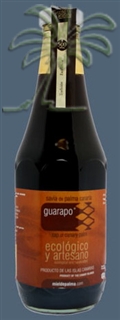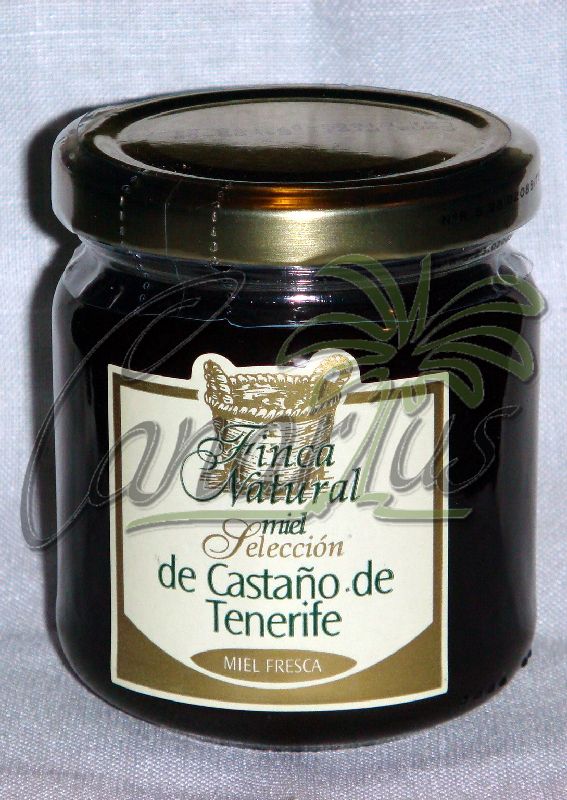Palm honey is not Bee honey. It is the concentred sap of the Canary Islands native palm, Phoenix canariensis. It is thinner and darker than bee-honey. Both are natural sweeteners, but there is a big difference in taste and chemical content. The Canary Islands are home to great bee-honeys produced from indigenous flowers. Both bee-honey and palm-honey are used in local cuisine.
Difference in Cuisine and their nutritional content
——
- Bee-Honey is better on: Fresh Fruits, Milk as sweetener.
- Palm-Honey is better on: Fresh Cheese, Yogourt, Liqueurs.
- Both are good in: Cakes, Gofio, Sweetener for Tea

Ecological Guarapo – Palm Honey is typically sold in glass bottles

Chestnut Honey – Bee Honey is typicall sold in glass jars
——
There is also a big difference in nutritional content. Palms and bees are different living beings! Both are very healthy products because they contain natural, beneficial chemicals. Their content is different. Palm honey, for example is very rich in Magnesium and Potassium.
——
Here we share a table from a study performed on canarian honeys.
| ESSAY OF THE CONCENTRATION OF INORGANIC IONS IN THE “PALM HONEY” FROM THE SAP OF THE CANARY ISLANDS PALM. | ||
| IONS (%) |
PALM HONEY | BEE HONEY |
| CALCIUM | 0,0043 | 0,006 |
| COPPER | 0,00015 | 0,00007 |
| IRON | 0,0010 | 0,0009 |
| PHOSPHORUS | 0,025 | 0,016 |
| MAGNESIUM | 0,019 | 0,006 |
| POTASSIUM | 1,038 | 0,010 |
| SODIUM | 0,056 | 0,003 |
| ZINC | 0,00034 | - |
| Source: “Análisis bromatológico de iones inorgánicos en Miel de Palma” Alberto Castilla Armas – Pedro Abreu Gonzalez |
||
——
You can buy different types of palm-honey and bee-honey from the Canary Islands in the Honey Section of our Shop. We ship to anywhere in Europe.

















